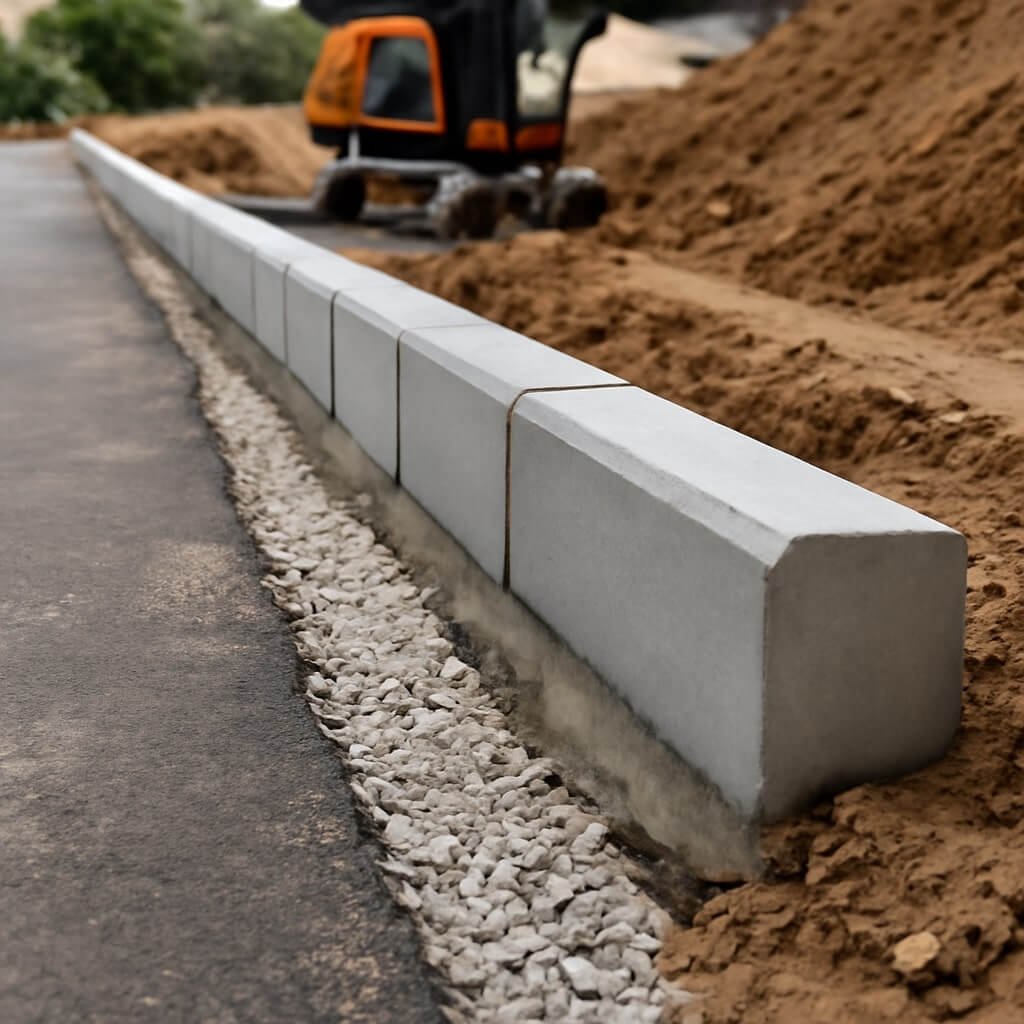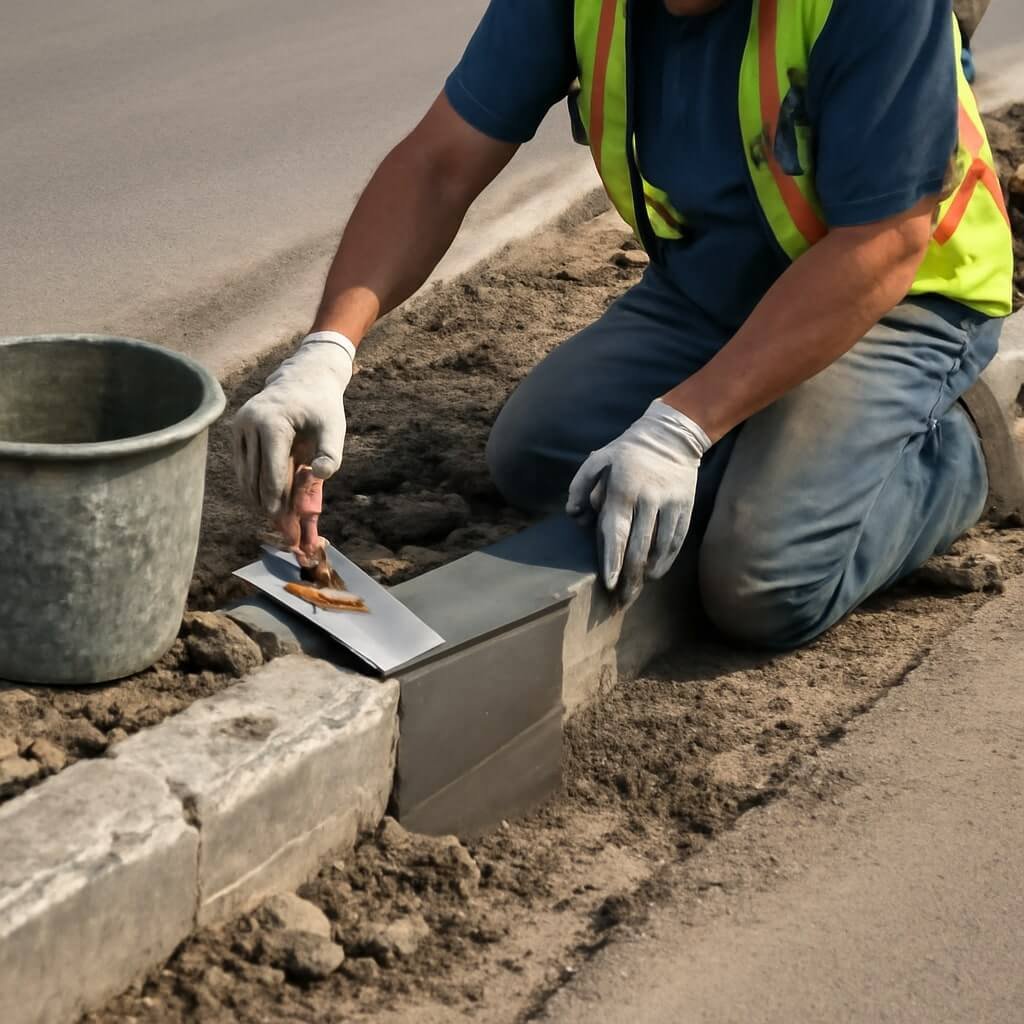Curb resurfacing is a necessary maintenance task that not only improves a property’s aesthetic appeal but also enhances safety and durability. However, the cost of curb resurfacing can vary significantly depending on several factors. Understanding these cost-influencing variables can help homeowners, property managers, and municipal planners make more informed decisions when budgeting for such projects.
In this article, we break down the most important factors that affect curb resurfacing costs, provide tips for minimising expenses, and answer frequently asked questions to help you get the most value from your investment.
Key Factors That Affect the Cost of Curb Resurfacing

1. Type of Curb Material
The material used for the curb has a significant influence on resurfacing costs. Common materials include:
- Concrete: Durable and widely used; however, more expensive to resurface.
- Asphalt: Cheaper than concrete but requires more frequent maintenance.
- Stone or Brick: Aesthetic but costly due to labour intensity and material price.
Each material has different preparation, application, and labour requirements, directly impacting the final quote.
2. Extent of Damage
The severity of the damage to the curb determines whether it requires:
- Minor patching or crack filling (lower cost)
- Full resurfacing (moderate cost)
- Replacement or structural repair (highest cost)
A proper inspection is crucial to assess the extent of wear, cracking, and structural failure.
3. Surface Area to Be Resurfaced
Curb resurfacing is typically priced per linear foot or square foot. The larger the surface area, the higher the total cost. However, bulk resurfacing may reduce the per-unit rate due to economies of scale.
4. Preparation Work Needed
Before resurfacing begins, contractors often need to:
- Clean debris and vegetation
- Grind or remove old layers
- Level or regrade the surface
Preparation adds time and cost to the project, especially if prior maintenance was poorly done or if root growth has disrupted the curb alignment.
5. Location and Accessibility
Urban locations tend to have higher labour rates and may require permits or restricted working hours, increasing costs. Additionally, curbs in hard-to-reach areas (tight corners, steep inclines, or obstructed access) may require specialised equipment or longer project durations.
6. Labour Costs and Contractor Rates
Labour rates vary by region and contractor expertise. Specialised companies may charge more, but they offer better quality assurance, warranties, and compliance with local regulations. Always obtain multiple quotes for comparison.
7. Permitting and Local Regulations
Depending on your locality, you may need a permit for curb resurfacing. This process can involve:
- Application fees
- Engineering approvals
- Traffic control measures
Delays or additional administrative requirements can inflate project costs.
8. Weather and Seasonal Timing
Curb resurfacing is weather-dependent. Cold, wet, or overly hot conditions can delay work or require special treatments, increasing both material and labour costs. Spring and early summer are ideal seasons, often booked in advance.
How to Save Money on Curb Resurfacing
- Get Multiple Bids: Compare at least 3 estimates from licensed contractors.
- Combine Projects: Resurface curbs alongside driveway or pavement work.
- Do It Off-Season: Some contractors offer discounts in late fall or early winter.
- Regular Maintenance: Sealing small cracks early prevents expensive damage later.
Frequently Asked Questions (FAQs)
How much does curb resurfacing typically cost per foot?
Can I resurface my curb myself?
Does my homeowner’s insurance cover curb resurfacing?
How often should curbs be resurfaced?
Are permits always necessary for curb resurfacing?
What’s the difference between resurfacing and replacing a curb?
Replacement requires demolishing the old curb and pouring a new one.
Resurfacing is generally more affordable but only suitable for curbs without major structural issues.
Conclusion
Curb resurfacing costs are influenced by a range of factors, from the materials and extent of damage to labor rates and weather. By understanding these variables, property owners can plan more effectively, avoid hidden costs, and ensure long-lasting results. Don’t skip professional consultations, and remember—maintenance today saves costly repairs tomorrow.



